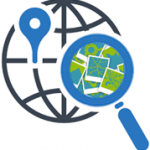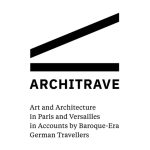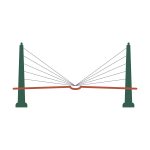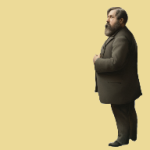Public datasets
The ALEGORIA-DB benchmark is an image dataset involving heterogeneous geographical heritage images of various objects of interest in French urban and natural scenes, through a time period ranging from the 1920s to nowadays. The content is highly characterized by multi-date, multi-source and multi-view images. ALEGORIA-DB consists of a total of 13175 images of high resolution (800px*variable), decomposed as follows: 1859 query images dispatched in 58 classes, where each class is defined around an object or a location in urban or natural scenery ; 11316 relevant image distractors. One originality of the dataset is that each query image was manually annotated with several quantized attributes associated with image variations, making it relevant for the evaluation of approaches facing these variations.
License: Custom license, please specify
The dataset includes cartographic visualization data and software designed, implemented, and published for the ARCHITRAVE research project website. The research focused on the edition, executed in German and French, of six travelogues by German travelers of the Baroque period who visited Paris and Versailles. The edited texts are published in the Textgrid repository. For all further information on the content and objectives of the research, please refer to the website (https://architrave.eu/) and given literature. Three visualizations were created for the website: the travel stops of five of the travelers on their way to Paris and Versailles the sites in Europe mentioned in the six travelogues the sites in Paris described by the six travelers The visualizations were implemented with Leaflet.js. The dataset contains scripts for data crunching processed geodata scripts for leaflet.js License README
License: CC BY-NC-SA
The letters that Balthasar Neumann sent to his employer, the Prince-Bishop of Würzburg Johann Philipp Franz von Schönborn, during his trip to France between January and April 1723 are particularly informative because they reveal the diplomatic skills of the Franconian Baroque architect who later became famous. Neumann had been sent to France to present his plans for the Würzburg Residence, which had been in planning since the turn of 1719/20, to the first royal architect, Robert de Cotte. But in addition to de Cotte, Neumann also sought the advice of Germain Boffrand, the "premier architecte" of the Dukes of Lorraine. In the 19 letters that have been preserved, most of which summarise his conversations, Neumann is open to the design and taste preferences of his French colleagues, but he persistently tries not to deny his own planning ideas. A latent resistance to French architectural ideas - as far as façade designs and interior distributions are concerned - is at the same time counterbalanced by a sincere admiration for the new French interior decoration and the French decorative arts. This ambivalence makes Neumann's letters, which have never been fully translated into French and have not yet received sufficient attention in French research, particularly meaningful - especially with regard to the artistic interactions between Germany and France during the Régence and the early reign of Louis XV.
License: CC BY-NC-SA
Leonhard Christoph Sturm's publication is of particular value because of its frankly expressed, strikingly critical attitude towards French art and architecture: as if in a burning glass, it makes visible the Franco-German competitive relationship that became increasingly evident in the High Baroque, and which existed not only on a political-military but also on a cultural level. The thoroughly admired French model is subjected to systematic scrutiny and even "corrected" several times. The German architectural theorist and strict pietist passes partly merciless judgements on what he considers to be unsuccessful building designs: He castigates any deviation from the mathematical principles and laws of proportion of architecture that he considers fundamental, since he derives their irrefutability from biblical revelation. The Architectonische Reise-Anmerckungen thus turn out to be a didactic textbook with a cultural-political impact, aimed at aspiring architects from the German-speaking world. By no means should the Reise-Anmerckungen be misunderstood as a mere inventory of French architecture around 1700, even though the book is based on independent, authentic travel impressions. Christian Friedrich Gottlieb von dem Knesebeck's travel journal seems to be a precursor to Sturm's publication.
License: CC BY-NC-SA
Christian Friedrich Gottlieb von dem Knesebeck's treatise has the same somewhat opinionated tone and didactic impetus as Leonhard Christoph Sturm's Architectonische Reise-Anmerckungen. In fact, Knesebeck's Kurtze Beschreibung einer Tour durch Holland nach Franckreich, von Braunschweig is directly related to Sturm's book, which was published in its first edition in 1719: most likely, Knesebeck's manuscript is a copy of Sturm's compiled travel notes, which he compiled after his journeys to the Netherlands, Flanders and France in 1696, 1699 and 1712 and then used to write his printed work. However, Sturm's original notes are lost today, so that in Knesebeck's copy we possess the only original copy of Sturm's travel notes found to date. We can only speculate about the circumstances surrounding the creation of this copy: Around 1713, Sturm once again turned to publishing projects and may have asked Knesebeck to transcribe his travel notes and drawings into the original. However, Knesebeck is also known to have undertaken a journey to France between 1711 and 1713, albeit one that is hardly documented. In preparation for this trip, he may have asked Sturm to copy the notes. Since Knesebeck's manuscript differs in numerous points from Sturm's printed version of the book, researchers have a unique opportunity to trace the editorial processes that turned a travel description into a didactically oriented yet literarily appealing textbook: Individual proposals that were provocative in terms of art policy, such as the improvement of the Versailles Mirror Gallery, were omitted from the book version, but can still be found in Knesebeck's manuscript.
License: CC BY-NC-SA
Christoph Pitzler's notes - written in the mid-1680s during a stay of several years in Paris - are among the earliest substantial surveys of French architecture under the rule of Louis XIV that have come to light from the pen of a contemporary German architect. Pitzler is neither brilliant in his judgement nor in his drawing skills. Nevertheless, his travel notes on France, which comprise about 140 pages and are characterised by a close interweaving of sketches and explanatory texts, constitute a fund that provides information on numerous buildings and interiors not otherwise recorded by any other traveller: For example, Pitzler was the first to note and draw some of the marble floors in the king's Grand appartement in the Palace of Versailles; his cursory renderings of the façade and floor plan of the Hôtel particulier in the Rue de l'Université in Paris, where the Hereditary Prince Johann Georg of Saxony (later Elector Johann Georg IV) lodged during his stay in the French metropolis, are also singular. But Pitzler's illustrated account of the workings of the Marly machine - that universally admired pumping station on the Seine - is also unique among the surviving testimonies of German travellers of the time because of its detail. Despite all the coincidences that may have conditioned the selection, Pitzler's notes thus show what an architect from the German provinces considered noteworthy in Paris and the surrounding area in the 1680s. How he incorporated the inspiration from France into his architectural œuvre, although it is limited in size, has not yet been sufficiently investigated.
License: CC BY-NC-SA
The travel journal of Lambert Friedrich Corfey still belongs to the long tradition of humanistic travel descriptions, whose essential features include the enumeration of curiosities and oddities and, above all, the passionately meticulous recording of Latin inscriptions on buildings and monuments. However - and this is what makes this source so special - Lambert Friedrich and his younger brother Christian Heinrich Corfey, who travelled with him, also describe their individual travel impressions in addition to the buildings and technical achievements that interested them: Country and people, landscapes, religious customs are already given a place in the travelogue. Lambert Friedrich Corfey's journal thus displays a hybridity that seems to be a characteristic of the transitional phase between late humanism and the early Enlightenment, without research having recognised this sufficiently so far.
License: CC BY-NC-SA
The pages that Ferdinand Bonaventura Count von Harrach devotes to France within his personally written journal of 1698 are among the most original and revealing sources in the history of the perception and judgement of French art around 1700 - for the following reasons: Firstly, a high-ranking Habsburg nobleman and diplomat, who as a builder and collector of paintings was able to develop a pragmatic gift for judgement, coupled with an incorruptible eye for quality, is judging here. On the other hand, the language used by the Count is matter-of-fact and sober, which enables him to critically question individual French art productions in a concise and yet never disparaging form. Moreover, the Count, although actually incognito in Paris, has access to many princely palaces and private hôtels particuliers due to his rank: some of his descriptions of these interiors are among the only ones we have from the pen of a traveller of the time.
License: CC BY-NC-SA
Related projects
ALEGORIA: Advanced Linking and Exploitation of diGitized geOgRaphic Iconographic heritAge ALEGORIA aims at facilitating the promotion of iconographic institutional collections…
Local Time Machines
Datasets
The project aims at scrutinizing the content of six substantial German travel accounts dating from 1685 to 1723, the earliest…
Local Time Machines
Datasets
- ARCHITRAVE [map visualization : data & software]
- Briefe der Parisreise von Balthasar Neumann, 1723 (Letters from his travel to France, 1722/1723)
- Reiseanmerkungen von Leonhard Christoph Sturm, 1719 (Travel Journal of Leonhard Christoph Sturm)
- Reisebeschreibung von Christian Friedrich Gottlieb von dem Knesebeck, um 1711-1713 (Itinerary of Christian Friedrich Gottlieb von dem Knesebeck)
- Reisebeschreibung von Christoph Pitzler (Itinerary of Christoph Pitzler)
- Reisejournal von Lambert Friedrich Corfey, 1698-1699 (Travel Journal of Lambert Friedrich Corfey)
- Tagebuch des Grafen Ferdinand Bonaventura I. von Harrach, 1697-1698 (Travel Journal Ferdinand Bonaventura I Count von Harrach)
Building geohistorical repositories: The Huma-num Paris Time Machine (PTM) consortium In the context of the digital humanities, geo-historical repositories put…
Local Time Machines
The “Tresor des Chartes” is the most valuable and iconic archive of the French kings and has been built as…
Local Time Machines
“Remonter le Temps” is a going-back-in-time tool developed by the French mapping agency (IGN) to observe the evolution of the…
Local Time Machines
WERMA: West-Europe Rail Map Archive, a collaborative portal 2021 was the European Year of the Rail: Future must build onto…




